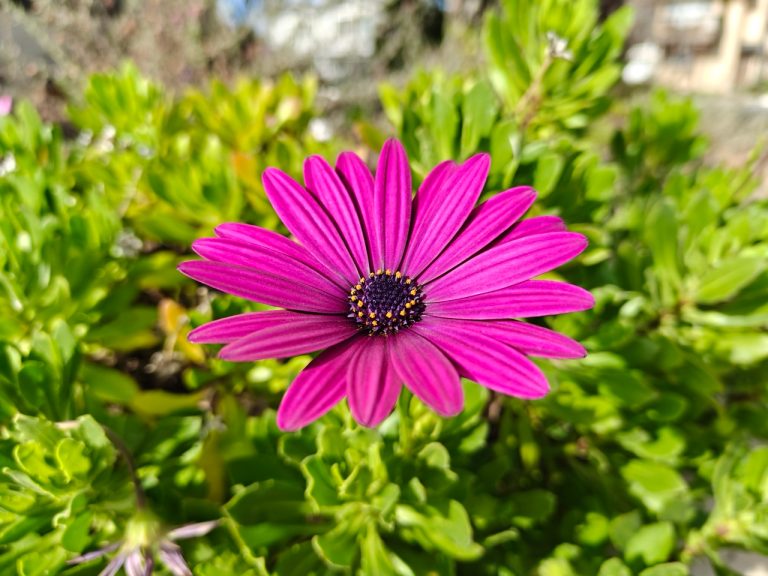OnePlus 13R
The OnePlus 13R may make compromises compared to the OnePlus 13 to hit a lower price point, but it still performs like a flagship with excellent features.
Pros
- Very reasonable price
- Nice design
- Solid camera
- Great performance
- Fast wired charging
Cons
- No wireless charging
- Last year’s top performance
The new OnePlus 13 is a compelling option, offering best-in-class water resistance, a great camera, and top-tier performance. You can read my in-depth OnePlus 13 review to learn all about it. But perhaps the more interesting release actually comes in the form of the OnePlus 13R — which offers many of the same features and only slightly worse performance, but at a much lower price. Indeed, at $599.99, it’s actually the OnePlus 13R that could really be the “flagship killer” that OnePlus wants its more expensive device to be.
Of course, the OnePlus 13R does still make compromises to hit that low price point — and some of those compromises are on some of the best OnePlus 13 features. So, is the OnePlus 13R worth buying, or should you look elsewhere?
OnePlus 13R specs
| Dimensions | 6.37 x 2.98 x 0.32 inches |
| IP rating | IP65 |
| Display resolution | 2780 x 1264 pixels |
| Display size | 6.78 inches |
| Display type | LTPO AMOLED |
| Display refresh rate | 1-120Hz |
| Display brightness | 1600 nits typical, 4500 nits peak |
| Chipset | Qualcomm Snapdragon 8 Elite |
| Memory | 12GB |
| Storage | 256GB |
| Rear cameras | Wide: 50MP, f/1.8, OISUltrawide: 8MP, f/2.2, 112-degreeTelephoto: 50MP, f/2.0, 2x optical zoom |
| Video | 4K 60fps, slow-motion 1080p 240fps or 720p at 240fps |
| Front camera | 16MP, f/2.4 |
| Ports | USB-C 2.0 |
| Battery size | 6,000mAh |
| Charging | 55W wired charging |
| Connectivity | Bluetooth 5.4, Wi-Fi 7, 5G |
| Colors | Astral Trail, Nebula Noir |
| Price | $599.99 |
An understated yet premium design
The overall design of the OnePlus 13R is relatively premium but not necessarily all that unique. Like the higher-end OnePlus 13, it has a large round camera module on the back. However, unlike that phone, you won’t get an option for the faux leather blue color. Instead, the OnePlus 13R only comes in white and black, or as OnePlus calls them, “Astral Trail” and “Nebula Noir.” While I definitely prefer the OnePlus 13’s blue color, the white Astral Trail color that my OnePlus 13R comes in looks quite good.
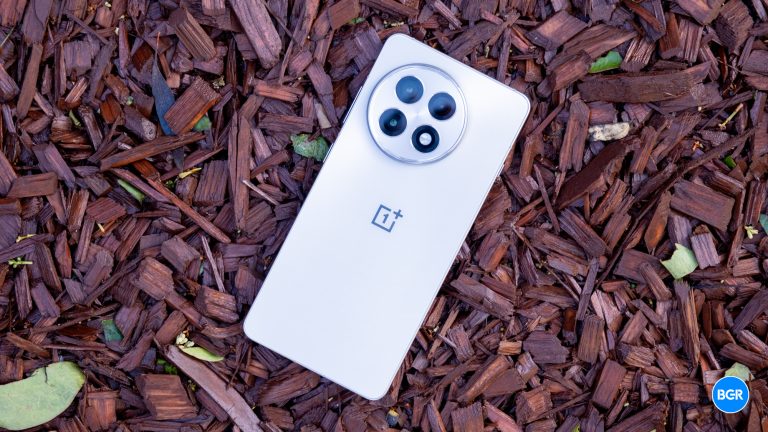
One change I really appreciate for this year is the switch back to flat displays and away from curved edges. I’ve never hated curved edges, but the flat display certainly looks more modern. The display on the OnePlus 13R is even flatter than that on the standard OnePlus 13. That could come at the cost of durability, but it definitely looks nice. Speaking of durability, the phone is made from an aluminum frame with Gorilla Glass 7i on the front.
Everything else about the phone’s design is more or less to be expected. On the right side, you’ll find the power button and volume rocker, while on the bottom, the USB-C port and SIM tray are located. The left is where you’ll find the ringer switch, a feature that I’m glad OnePlus has stuck with.
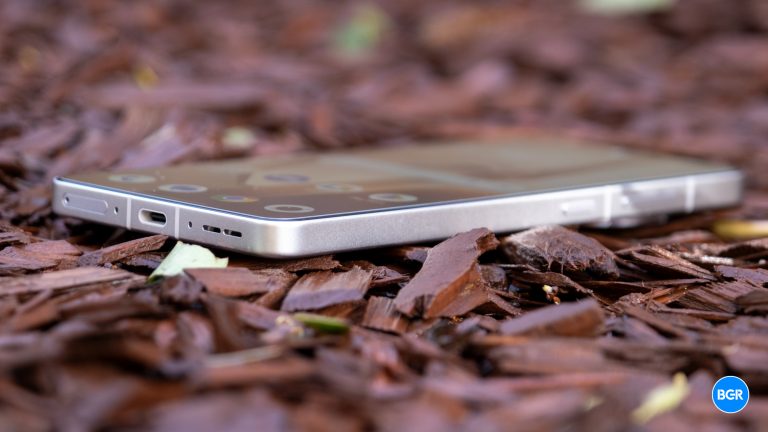
The OnePlus 13R is missing one major feature offered by the higher-end OnePlus 13: IP69 water resistance. While the OnePlus 13 can survive a trip in the dishwasher, the 13R sticks with an IP65 rating. This essentially means that while it can withstand low-pressure water, such as being used in the rain, there’s no guarantee of it surviving actual submersion. I would have liked at least IP66 or IP67 here, especially considering many other phones in this price range have it.
Still, I like the overall look and feel of the OnePlus 13R. It certainly looks more expensive than it is.
A vibrant, bright display
The display on the OnePlus 13R is 6.78 inches, and it’s an LTPO AMOLED display, meaning that it can range in refresh rate from 1Hz to 120Hz. It also matches the brightness offered by its more expensive sibling, with a peak brightness of 4500 nits.

The main thing it doesn’t quite match is the resolution, sitting at 2780 x 1264. While it’s not as crisp as the OnePlus 13 screen, it’s still very detailed, and I doubt many users will have an issue with its resolution.
And, despite the lower resolution, the screen is excellent. It’s vibrant and bright, and it feels smooth and responsive. It also houses a fingerprint sensor, which seemed fast and accurate in my testing.
Last year’s best performance
The OnePlus 13 has Qualcomm’s latest and greatest mobile platform in the form of the Snapdragon 8 Elite. The 13R, on the other hand, swaps it out for last year’s flagship chip, the Qualcomm Snapdragon 8 Gen 3.
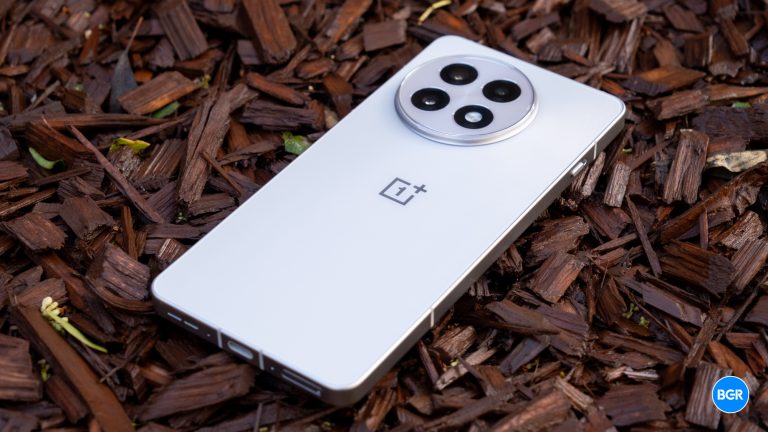
So what does that mean for actual day-to-day usage? Well, not much. The performance on the phone is still excellent, and it’ll load games quickly and handle multitasking with ease. The phone is fast and responsive and should be able to take care of anything you can throw at it in 2024. Sure, there’s a slight difference in benchmark results, and I’m certainly not saying that the Snapdragon 8 Gen 3 performs as well as the Snapdragon 8 Elite, but most users likely won’t notice much of a difference, regardless.
Perhaps the only difference between the two chips might show towards the end of the phone’s lifespan rather than now at the beginning. Having a newer generation chip might allow the OnePlus 13 to remain high-performing for an extra year or two after the 13R has started to slow down. That said, OnePlus has promised that both the OnePlus 13 and 13R will receive 4 years of Android operating system updates and 6 years of security updates.
Good battery but no wireless charging
Powering it all is a 6,000mAh battery, and I found that it was able to keep the phone running easily through a full day of even heavier use, and most of a second day. Light users could probably stretch it to two days. Regardless, if you’re good at charging your phone up overnight, for example, you might find that you never really have to worry about battery unless you happen to game on it all day or something.

Unfortunately, the phone isn’t quite as versatile when it comes to charging as the OnePlus 13. It does support reasonably fast wired charging at up to 50 watts with the included power adapter, but that’s the only way it can charge — there’s no wireless charging option at all, let alone support for newer standards like Qi2. That’s a little disappointing. While Qi2 would be a nice added bonus, some kind of wireless charging is pretty much necessary in this price range in 2024. Most mid-range and high-end phones have it.
A versatile triple-camera system
The camera system on the OnePlus 13R isn’t as impressive as that of the OnePlus 13, but it’s still relatively versatile and produces solid photos. The main camera is a 50-megapixel camera with an f/1.8 aperture. In addition to that camera, it also has a 50-megapixel telephoto camera with 2x optical zoom and an 8-megapixel ultrawide camera with a 112-degree field of view.
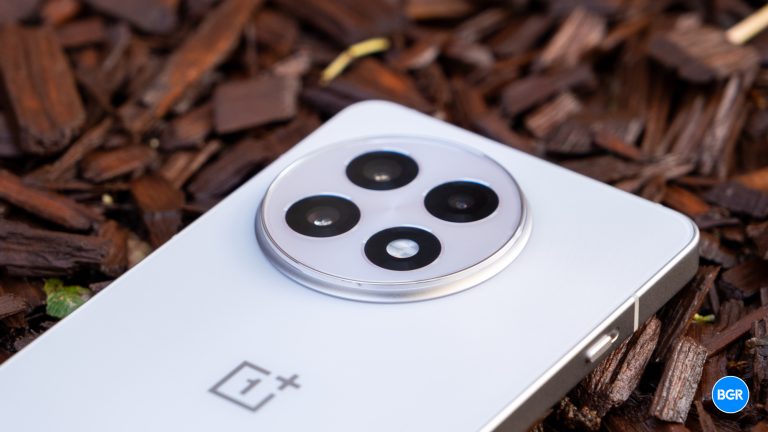
Two times optical zoom is a little limiting though. I already found the 3x optical zoom on the higher-end OnePlus 13 to be a little below average, but when combining that camera with the built-in AI features, it’s still able to produce very detailed zoomed-in shots. 2x lossless zoom is something that many manufacturers can achieve by cropping the main sensor without the need to add a second telephoto camera at all. I suspect in the future most main cameras will be able to crop the sensor for low levels of zoom and rely on a telephoto lens for much higher levels.
The camera supports up to 20x zoom, essentially adding 10x digital zoom, and thankfully, the AI features that improved zoomed shots on the OnePlus 13 are present here too. While images aren’t that realistic, and you can certainly see that the image has digital zoom, they’re far more impressive than you might assume.
Outside of zoomed shots, the camera is able to capture vibrant and detailed images overall. Images are reasonably realistic, though the camera did seem to pump up contrast a little. That’s not a bad thing though — I quite liked the stylization of the images.
The camera also supports OnePlus’ new “dual exposure algorithm” tech, which essentially combines images of two exposures for detailed images that still offer plenty of color and vibrancy.
As you would expect, there are plenty of AI-based features packed into the camera. Notably, there’s a new AI unblur feature that can sharpen up images — even those not captured by the phone itself. And, there’s an AI reflection removal tool that can remove the reflections you might get when you take a photo through a window. Both of these worked pretty well, though neither of them looks as natural as if the image was sharp or didn’t have any reflections in the first place.
Regardless of how the camera captures images, they are detailed and bright the vast majority of the time. That includes in low-light — which is nice to see.
Scaled-back and versatile software
The OnePlus 13R comes with OnePlus’s own OxygenOS based on Android 15. For the most part, I quite like OxygenOS. It’s reasonably scaled back and easy to navigate, and there aren’t too many additional apps and services packed into the software to make it confusing. If you’ve used a OnePlus phone before, you’ll find it easy to navigate through OxygenOS, but even if you haven’t, you’ll get used to it very quickly.
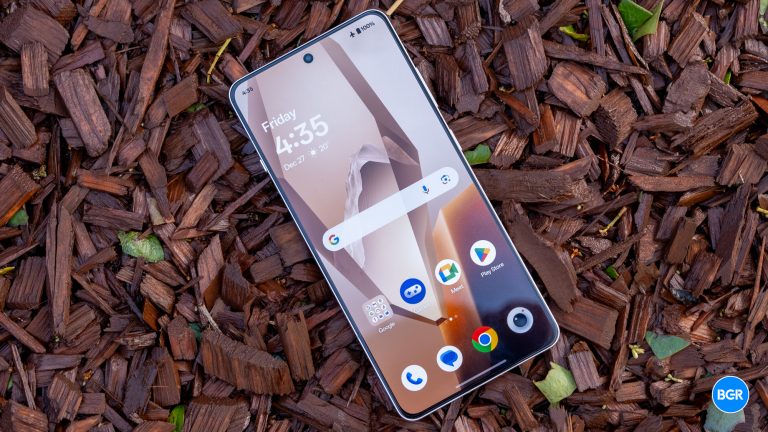
OnePlus says that the OnePlus 13R will get four years of operating system updates, along with six years of security updates. This isn’t bad — though competitors are promising more. Google’s Pixel phones, according to Google, will get seven years of updates, something matched by Samsung for its latest flagship phones. Still, it’s nice to see the general trend of manufacturers providing more updates, and hopefully, over time, OnePlus will increase the number of updates its phones get.
There are some AI features that you might find useful too — like a new AI writing tool, which can rewrite text. This is a feature that I typically don’t find useful, but you might.
Conclusions
Once again, OnePlus is offering an excellent phone at an excellent price. The OnePlus 13 provides a flagship experience with features that you won’t get anywhere else, but it also comes at what many would consider a flagship phone price. The OnePlus 13R, on the other hand, gets pretty close to that same experience at a much lower price.
Sure, you won’t get the IP69 water resistance, the same camera quality, or quite the same performance, but the compromises that the OnePlus 13R does make are compromises that most users will be fine with. Generally, the OnePlus 13R is a little worse than the OnePlus 13 in pretty much every way, but it still excels, especially compared to similarly priced competition.
The competition
If you’re looking for a phone that performs like a flagship and has flagship-tier features, but at a lower price, the OnePlus 13R is the way to go right now. Most of the competition comes in the form of midrange phones that make much larger compromises. That said, if you like the Pixel software experience, it may be worth considering a device like the Google Pixel 8A.
Should I buy the OnePlus 13?
Yes. It’s not as good as the OnePlus 13R, but its compromises are easily worth the much lower price.





